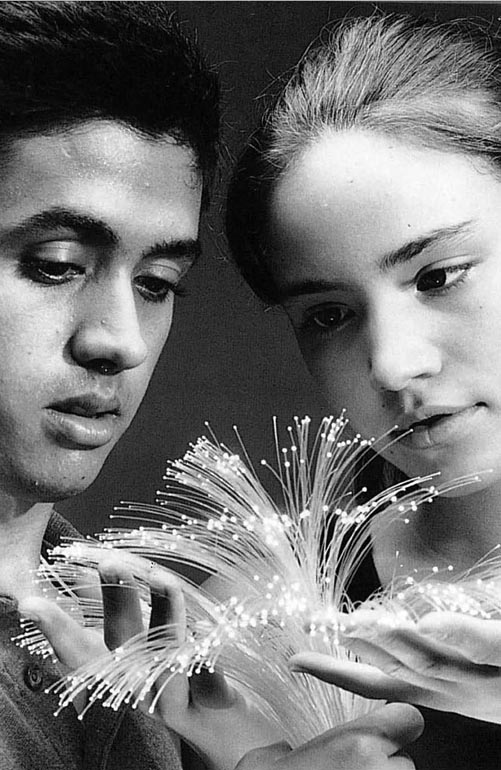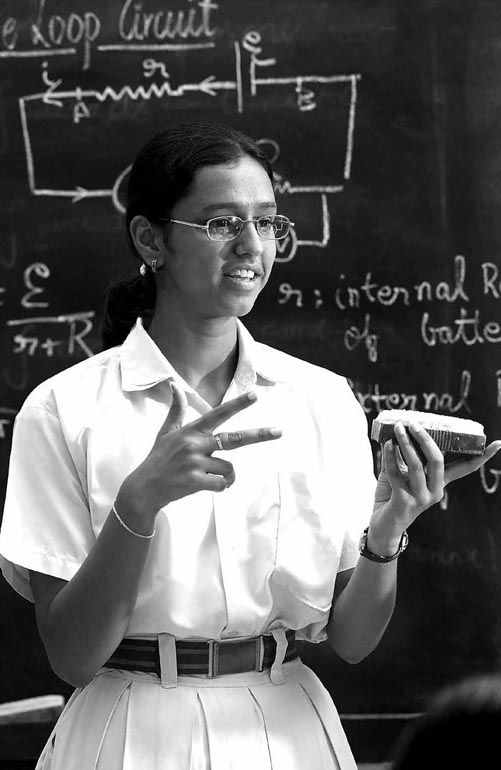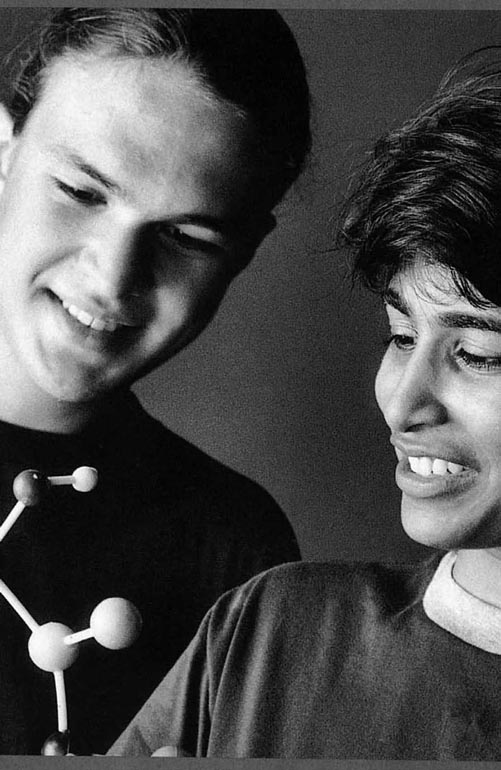A Philosophy of The Role of The Contemporary Teacher - The Contemporary Teacher and Dynamic Methods of Teaching-Learning

The Contemporary Teacher and Dynamic Methods of Teaching-Learning
The contemporary teacher will not be in a position to fulfill his role adequately unless educational methodology and contents of education begin to improve. The more these improve, the subtler will become our demands on the teacher.
The use of technologies might in due course reduce some burden of routine instructional work; but it will open up the possibilities of individualized learning-teaching processes.
The teacher will begin to be judged not only by the substance of what he will communicate and his power of stimulation, but also by what he is in his inner self, particularly whether he is capable of higher levels of reflection, whether he is impartial in his judgments, and whether he knows his subject from the standpoint of a wider spectrum of knowledge.
A stagnant system of education cannot tolerate a dynamic teacher; an irrelevant system of education cannot permit a teacher to make his teaching relevant to the needs of the learner or society; and a book-oriented, subject-oriented and examination-oriented system of education cannot provide the requisite opportunities to the teacher who wants to promote the objectives of peace, cooperation and integral personality.
Sooner, rather than later, the intricate problems of the teaching- learning process must receive central attention, and we shall then see that an important role of the teacher at the present juncture will be that of an innovator or inventor of dynamic methods.
A principal method of teaching today is lecturing. There are merits and demerits of teaching by lecturing. Basically, the lecture system induces passivity among students. It is grouporiented and it does not easily yield to the needs of individualoriented dynamic learning process. Moreover, the lecture system imposes a certain pattern of time-tables, which reduces the possibilities for teachers and students for individualoriented learning. Also, the lecture system is suited only to one or two varieties of the group-oriented learning process. For instance, it is not very relevant when a group is engaged in a joint enterprise or a result-oriented activity; here, the project system is more relevant.
In the new design of education, the lecture system is not likely to play a pivotal role. It is now being increasingly realized that the student is best helped when he is allowed free initiative not only in regard to the choice of subjects or topics but also the pace of his progress. This is why self-learning is being advocated more and more insistently.
There are a number of problems connected with self-learning. First, self-learning needs to be supplemented by frequent or occasional help from teachers. It also needs to be supplemented by various kinds of group-activities. While the process of self-learning does not yield easily to prefixed time-tables, the need of help from teachers and the need of group-activities are more easily fulfilled by resorting to prefixed time-tables. Our perplexities are further accentuated when we consider the question of syllabus and its relationship with examinations.
A possible solution that has been suggested by some educationists is to emphasize a consultation system. In this system, lectures would play a subordinate role, and students would be expected to learn by themselves to the maximum degree possible. However, they would be allowed to consult teachers as and when needed, partly by prior engagement and partly by ready access.
In this system, students would come to their classes not to listen to lectures but to do their own work. It is not difficult to arrange the facility of consultation with teachers in a dynamic situation where the classroom itself is organized not as a lecture room but as a workshop, where learning is conceived as a multi-dimensional process designed to promote concentrated study, skill-oriented activity, and creative imagination and expression.
The present system of education utilizes tests as a means of motivating students to learn. Tests are also often used as a threat or punishment. The fact that even a dull, mechanical mind can pass tests, and that too, with honours, is sufficient to pass a verdict against the present system of tests, Again, the fact that the most important aspects of culture lie beyond the scope of the present system of tests is sufficient to show that tests should occupy only a marginal place in the total scheme of education.
There are what may be called ‘romantic’ periods of study, and they occur to different students at different stages of development. These are periods of general expansion, of a passion for a given pre-occupation, of falling in love with education. These periods are unsuitable for tests.
On the other hand, there are periods when students need to clarify their vague ideas and systematize their thoughts, when oral or written tests can be very useful. There are also periods when there is dullness, indifference and inertia. Here tests for stimulation can be quite relevant. There are also periods of assimilation at the end of which there is a need to review in a coordinated manner different elements of study or work. Here tests for an extensive exposition would be quite relevant. There are also periods when the student is willing to undergo a rigorous programme of training, when even a series of difficult and strenuous tests would be perfectly justified.
It is clear that tests have to be varied, and if the education system is suitably redesigned, it would be possible for teachers to give tests to students as and when necessary. Tests can be inter-woven with a dynamic process of learning, with such flexibility, that each individual would be free to take a test according to his progress.
All these tests can be classified under tests that are a part of the process of the formation of personality, distinct from those meant for certification. The latter should be public in character and should be designed to enable the examiner to assess as objectively and comprehensively as possible the comparative attainments of individuals, to determine their suitability for work and responsibility. These reflections show that the contemporary teacher is called upon to demand a radical change in the system of teaching-learning so he can employ dynamic methods.
It is being increasingly recognized that one of the best methods of teaching is not to instruct the learner, but to present him with materials and an environment in which he can be stimulated to discover for himself what is intended to be learnt. In a model of the exploration project, teachers stimulate learners to make direct contact with the environment after defining the objectives of intended exploration. Learners determine the procedure, and the execution of the exploration is followed by an appraisal with reference to the objectives and personal processes of learning. A number of action projects which have been attempted include learning situations that are closely coupled with self-regulated practical action which demands competency of knowledge and skill. Special emphasis is laid on the achievement of a certain result that practical action is intended to entail. The learning experience is closely connected with the creation of learning situations and result-oriented practical action.
The individualized programmed instruction follows an instructional model which is designed to bring about effective communication on precisely defined goals of learning. This model makes extensive use of programmed teaching and learning materials, which are used for communicating cognitive stores of knowledge, particularly in spheres of learning in which linear sequences of steps of learning appear meaningful. At one stage it was felt that this model of instruction is relevant only to a certain section of students, but experiments have shown its direct relevance to multi-level single teacher institutions.
Although this model has its limitations, it can be used in many situations, particularly where the pace of progress requires to be varied according to the needs of different categories of students and where the active participation of the individual in the learning process needs to be emphasized.
In a slightly modified form of programmed learning, great use is made of work-sheets. A work-sheet is part of a learning module in which the contents of learning are presented in such a way that the learner is required to interact by way of filling in the blanks or correlating certain presented data or replying to some questions. Answers are often concealed in the data or in the questions themselves. Work-sheets can be of various types, depending upon the kind of learning experience that is intended to be evoked or gained.
The most important among them are what are called ‘heuristic work-sheets’. These work-sheets are intended to stimulate learning by discovering. The work-sheet system facilitates, to a great extent, multi-level teaching by a single teacher. It also facilitates ‘unit’ studies and unit testing. The learner is also helped in pursuing his studies at his own pace and to vary the syllabus to suit his own special interests.

In a more sophisticated approach, learners are enabled to make an adjustment between their interests in learning and their style of learning. They are also enabled to relate these to the learning environment. In the first phase, the learner has to decide on what he is interested in learning within a given framework and on the kind of cognitive approach to it. The second phase is governed principally by reading activities. In the third phase, the central feature is the appraisal of the knowledge acquired and, above all, the judgment of its significance. The area of applicability of this approach, which is sometimes called ‘info-bank’ approach, is defined by the necessary abilities of the learner to work on his own, and by the possibility of separating the categories of knowledge and processing them more intensively.
There are still several other trends of innovation in the teachinglearning process which the contemporary teacher can adopt. In a significant experimental model, the teacher constructs an educative environment, and learners receive an orientation over the possibilities of action and learning, following which they enter into mutual relations with the environment for a fairly long period. In the final phase, they actualize the possibilities of further development and moulding of this environment. This model has been employed in the fields of both elementary and higher education.
Learning by teaching is another model, which is based on the principle of transferring to the learner all or some of the functions of a teacher, whereby to a certain extent, he acquires qualifications auto-instructionally. This model of ‘pupils learning from pupils’ is often found in operation in elementary and secondary schools, and good teachers everywhere have employed this model in varied contexts.
In yet another instructional model, a number of locally dispersed learners learn from one another because they inform and consult one another mutually and unselfishly from time to time about individual problems relating to an area in which they have an interest. In this model, which is often known as the ‘network’, every learner who joins this learning experience voluntarily, is under an obligation to operate the network through consultation, experimental testing and reporting back. This model is particularly relevant to the needs of nonformal learning.
In models called ‘serious game’ and ‘simulation game’, the learner takes over the roles of those responsible for the action and decision in simulated environments. Whilst in the serious game, the problems to be solved are frequently more complex and make the acquisition of external information necessary, the simulation game is largely restricted to information supplied in advance. These models are particularly suitable to those branches of learning in which the ability to act and to decide is to be taught.
The dynamic methods of teaching are learner-oriented, and special emphasis is laid on the learner’s needs and pace of progress. The old ideas where the learner was regarded as a plastic material to be moulded according to the teacher’s or parent’s design are fast disappearing, and we are moving into a new age of education where students and teachers will increasingly share their roles.
The present is a difficult moment of transition, where the teacher is called upon to discard the obsolete and invent the new. He needs a framework in which he can experiment with dynamic methods and evolve a progressive system of teaching-learning.

Related Books
- A Philosophy of Education for The Contemporary Youth
- A Philosophy of Evolution for The Contemporary Man
- A Philosophy of The Role of The Contemporary Teacher
- Philosophy and Yoga of Sri Aurobindo and other Essays
- Philosophy of Indian Pedagogy
- Philosophy of Value-Oriented Education -Theory and Practice